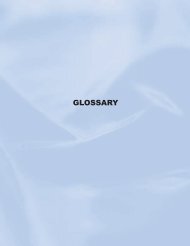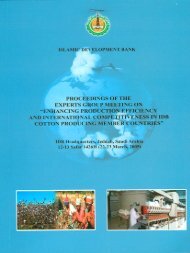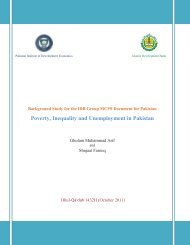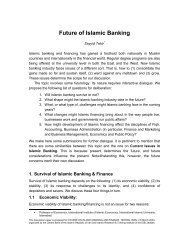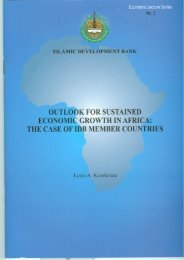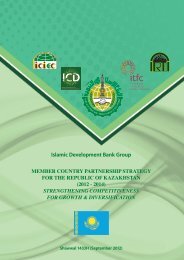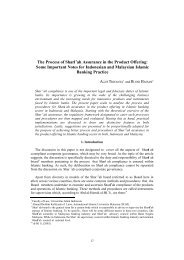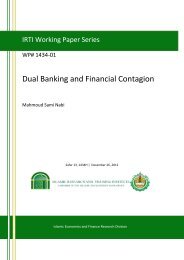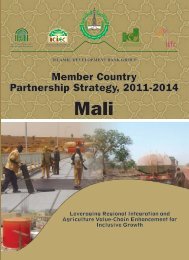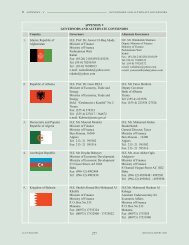faith-based ethical investing: the case of dow jones islamic ... - IRTI
faith-based ethical investing: the case of dow jones islamic ... - IRTI
faith-based ethical investing: the case of dow jones islamic ... - IRTI
- No tags were found...
Create successful ePaper yourself
Turn your PDF publications into a flip-book with our unique Google optimized e-Paper software.
14Islamic Economic Studies Vol. 17 No. 2As for <strong>the</strong> instruments in Z t-1 , we use local and global variables similar to thoseused by Sanders and Walter (2001). Local risk factors (lagged 1 month) are <strong>the</strong>GDP growth, short term interest rates, and <strong>the</strong> change in political, economic andfinancial risk ratings. Global factors (lagged 1 month) are MSCI AC World Indexdividend yield, world GDP growth, world inflation, US maturity spread, change in<strong>the</strong> price <strong>of</strong> oil, and <strong>the</strong> US default spread.5.3 Measuring <strong>the</strong> Benefit <strong>of</strong> a Portfolio Constructed with Islamic IndexesWe investigate cointegration using stock index price levels for all <strong>of</strong> <strong>the</strong> indexesduring each period. We conduct Johansen cointegration tests to determine longterm relationships between <strong>the</strong> markets. 8 Considering a VAR <strong>of</strong> order p:y A yt1 t 1 ... Apytp t(6)where y t is a k vector <strong>of</strong> non-stationary, I(1) variables; is a deterministic term;and A i are (n x n) matrices. Equation (1) can be rewritten as:y twherepyp 1t p iyti t(7)i1 is <strong>the</strong> impact matrix and associated changes in price,p yt, to prices, with ayt p p periods earlier. Johansen’s method is used to estimate <strong>the</strong> matrix preduced rank r and <strong>the</strong>n it tests if <strong>the</strong> restriction implied by <strong>the</strong> reduced rank <strong>of</strong>can be rejected. Lags, trend specifications and <strong>case</strong>s are established using <strong>the</strong>Akaike Info Criterion (AIC). 9 Likelihood ratio 10 is used as a trace statistic todetermine whe<strong>the</strong>r cointegration (reduction to r <strong>of</strong> ) between <strong>the</strong> two nonstationaryvariables is significant and how many cointegration equations arep p8 In <strong>the</strong> cointegration <strong>the</strong>ory (Engle & Granger, 1987), if non-stationary variables do notdrift apart from each o<strong>the</strong>r, <strong>the</strong>re is a long-term linkage between those variables; it is <strong>of</strong>tenseen as a test <strong>of</strong> cross-border equity market efficiency.9 We evaluate model selection criteria in terms <strong>of</strong> consistency. As we cannot know <strong>the</strong> truedata generating process, <strong>the</strong> most asymptotically efficient model selection criterion is <strong>the</strong>Akaike Info Criterion.10 The determination <strong>of</strong> <strong>the</strong> rank <strong>of</strong> p is solved by determining <strong>the</strong> number <strong>of</strong> eigenvalues( ˆ i ) <strong>of</strong> p that are statistically different from zero. The trace test statistic is calculated asfollows: Tn ˆ) where T is <strong>the</strong> number <strong>of</strong> observations, and r is <strong>the</strong> number <strong>of</strong>1ln(1rcointegrating vectors.i



